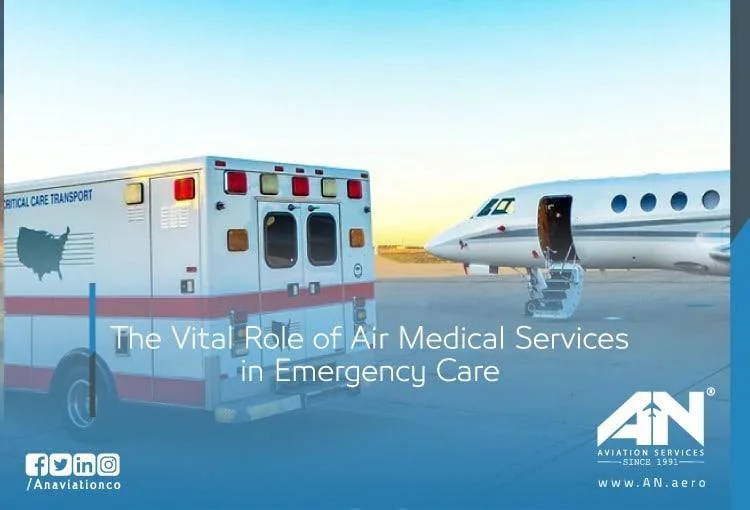
When it comes to life-saving solutions, few things are as critical as air medical services. In times of emergencies, speed and access to care can mean the difference between life and death. These specialized services provide rapid transportation and medical attention, particularly for patients in remote or hard-to-reach areas where conventional ground ambulances cannot deliver timely care.
But what exactly are air medical services, and why have they become a cornerstone of modern emergency care? Let’s dive into their vital role in healthcare, exploring their importance, functions, and the life-changing impact they have during critical situations.
What Are Air Medical Services?
Air medical services refer to the transportation of patients or medical personnel via aircraft, often during emergencies where every second counts. These services are typically carried out using helicopters or fixed-wing airplanes, depending on the urgency and distance. Air medical teams are equipped to provide advanced care mid-flight, ensuring that patients receive immediate attention even before reaching the hospital.
The primary objective is to bridge the gap between remote locations and specialized medical facilities, effectively reducing delays in treatment. These services are often used for trauma patients, organ transplants, neonatal emergencies, and other critical medical situations.
Why Are Air Medical Services Essential?
The necessity of air medical services is underscored by the increasing demand for rapid medical interventions. Below are the key reasons why these services play such a vital role:
Time-Sensitive Emergencies:
When minutes can determine outcomes, air transport is far faster than ground ambulances, especially over long distances or in areas with poor road infrastructure. For conditions like heart attacks, strokes, or severe trauma, faster transport significantly improves survival rates.
Access to Remote Areas:
In regions where ground transportation is impractical or nonexistent—such as mountainous terrains, offshore locations, or isolated communities—air medical services ensure that patients receive timely care.
Advanced In-Flight Medical Support:
Air medical aircraft are essentially flying ICUs. They are equipped with life-saving tools and staffed by highly trained professionals who provide care en route, stabilizing the patient’s condition and preventing deterioration.
Interfacility Transfers:
Sometimes, patients need to be transported from a smaller hospital to a larger, better-equipped facility. Air medical services ensure smooth and fast transfers for patients requiring advanced care.
Disaster Response:
During natural disasters or large-scale emergencies, air medical teams play a crucial role in evacuating injured individuals, transporting medical personnel, and delivering supplies to affected areas.
How Air Medical Services Operate?
The seamless functioning of air medical services relies on several key components:
- Aircraft: Helicopters are typically used for short distances and quick landings, while fixed-wing airplanes are ideal for longer distances. Both are equipped with advanced medical systems.
- Highly Skilled Teams: Air medical crews include pilots, paramedics, nurses, and, in some cases, doctors. Their expertise ensures that critical care is provided in flight.
- Coordination with Ground Teams: Ground ambulance services and hospitals work closely with air medical operators to create an efficient patient transport chain.
- Advanced Equipment: From ventilators to cardiac monitors and defibrillators, air medical services are outfitted with tools to handle even the most complex medical emergencies.
The Benefits of Air Medical Services
Beyond speed and access, air medical services bring several additional benefits to emergency care:
Reduced Pressure on Emergency Departments:
By quickly transferring patients to appropriate facilities, air medical teams help reduce the burden on local hospitals and emergency departments.
Specialized Neonatal and Pediatric Care:
Infants and children with critical conditions often require specialized transport. Air medical services provide the right environment, complete with medical experts trained in neonatal and pediatric care.
Support During Mass Casualty Events:
In situations involving multiple casualties, air medical services can quickly transport the most critical patients while coordinating resources for effective disaster response.
Global Reach:
For international emergencies or medical evacuations, fixed-wing air ambulances ensure that patients are transported safely and efficiently across borders.
Challenges Faced by Air Medical Services
While the impact of air medical services is undeniable, they come with their own set of challenges:
- Weather Dependency: Poor weather conditions can hinder operations, particularly for helicopters that rely on visual flight rules.
- High Costs: Operating aircraft and maintaining advanced medical equipment requires significant investment, making air medical services costly for many patients.
- Limited Availability: In some regions, access to air medical services is still limited due to logistical and financial constraints.
- Risk Factors: The crews operating air medical flights often work in high-risk conditions, such as navigating tight landing zones or flying during emergencies.
Future of Air Medical Services
The future of air medical services looks promising with advancements in technology and innovative solutions. The incorporation of autonomous drones for delivering medical supplies to remote areas is already under experimentation. Similarly, improvements in helicopter and airplane designs are making air medical transport safer, faster, and more efficient.
In addition, collaborations between government health departments, private organizations, and NGOs aim to make air medical services more accessible and affordable, ensuring that even underserved populations can benefit.
Conclusion: Saving Lives, One Flight at a Time
Air medical services stand at the intersection of aviation and healthcare, delivering life-saving solutions when they are needed most. Whether responding to emergencies, transferring patients between facilities, or providing critical care in-flight, these services are a testament to how innovation and dedication can transform outcomes in healthcare.
As technology continues to evolve, the efficiency and availability of air medical transport are bound to improve, paving the way for even greater impact. In the world of emergency care, where every second counts, air medical services truly make a world of difference—saving lives, one flight at a time.

